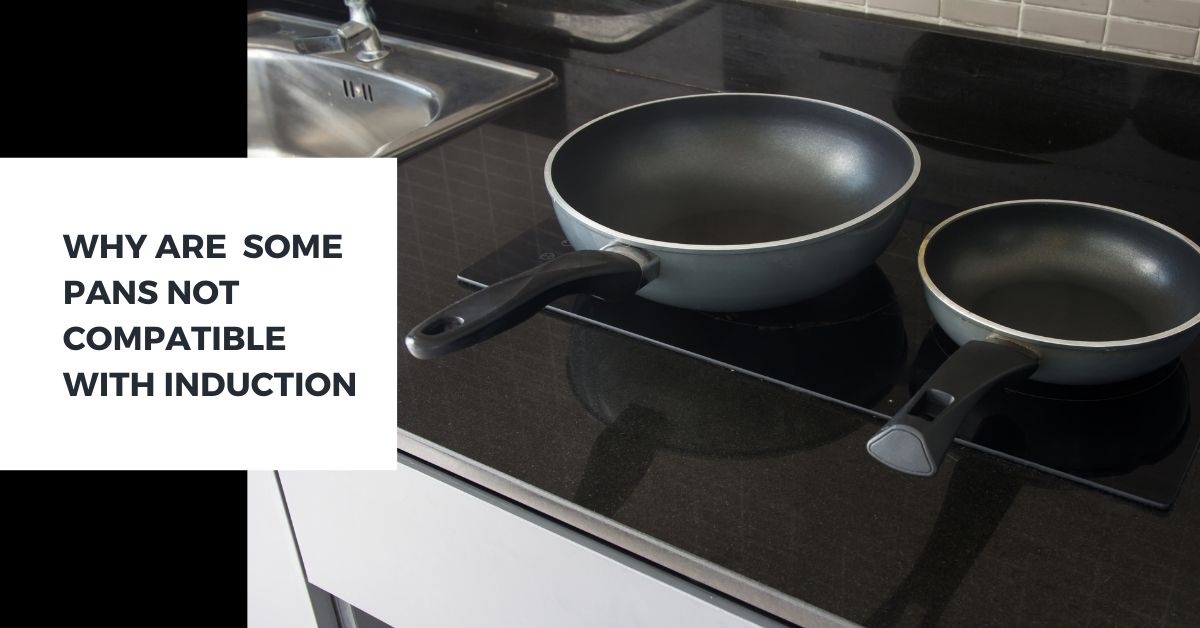Using induction hob for cooking purposes is not as complicated as you think. But the differences arise when you use non-compatible cookware for induction stoves. This is a common query where consumers tend to ask why are some pans not suitable for induction hobs?
As you all know, the technology involved in the induction stove follows all the latest practices. It can be the features and functionality that have been developed so that it makes the induction cooking task convenient. For this purpose, the manufacturers have recommended cookwares that are only compatible with induction stoves. As it helps in facilitating the technology and contributes to the heating process.
So when you use non-compatible cookware, the induction stove doesn’t operate. This creates a panic moment for consumers that they don’t find the induction stove operating even after recently purchasing it. We will be discussing the reasons and solutions for why some pans are not suitable for induction hobs.
Why are some pans not suitable for induction hobs?
The cookware that is used on induction hobs should be in the magnetic form of nature to produce an electric field strength. Because the process of transferring the heat from the induction hob to the cookware should have a magnetic presence. Only then the cookware starts to get heated and the food is prepared.
Below is the list of reasons for induction hobs not operating when you use non-compatible pans.
1. The pan is made up of different material
When you use the pans which are made up of copper or aluminium type of material, the induction stove will not function. Because magnetic field presence is absent within the kitchen utensils. And due to this reason, the pans will not be functional when you use them for heating purposes on induction hobs.
As the copper and aluminium products do not produce a magnetic field. When the induction starts its heating process, there is no heat getting transferred between both the mediums. This is the reason why the type of metal that your pan is made up of depends.
2. Size of the pans
The size also matters when it comes to choosing the type of pans for induction hobs. Because every induction hob will have its own requirement. And when you use a pan that is beyond its specification, the induction stove will not operate.
This is the reason you need to look out for the dimensions of the pan and check the compatibility level of your induction hobs. The pans can’t be too large or too small. It should have the specific dimensions that the induction hobs have been developed for.
3. Improper placing of pans
If you don’t keep your pans correctly on the induction hob, the machine will not operate. Because there is a right way of keeping the cookware on the top of the induction hob so that it starts the heating process.
For better results, you always need to place the pans properly over the induction hobs. Another factor can be if you are not giving attention when the cooking process starts. Because sometimes the cookware position can get changed. You need to keep an eye on the utensils.
4. Shape of the pan
This is one of the rarest problems that consumers face. If you use induction compatible then that has an uneven shape, the machine will not start working. Because of the position in which you keep the pans on the induction hobs, it doesn’t come in proper contact with the stove.
Ensure that you always prefer pans that have a flat base at the bottom. When you take a new pan that has a flat surface, it is easy for the induction hobs to operate.
5. Thickness of the pans
Another rarest situation where consumers face problems in using pans is because of thickness. Some of the induction hobs are not compatible with the pans which have wide thicknesses. As this contributes to the size expansion, induction hobs will not be able to transfer the heat to the food item which is present in the pan.
Before shopping for a pan, always check the thickness. Because this is the ideal way for you to get the best performance from your induction hobs.
Which pan should I prefer for induction hobs?
When you are shopping for induction compatible pans for induction hobs, always prefer induction compatible pans. You can easily find it in the online and offline markets.
Ensure that the pans are made up of stainless steel, cast iron, and enamelled cast iron. These are some of the major types of induction-compatible cookware that you can use for your induction hobs.
The reason for using this kind of pan is to create a magnetic field between the cookware and the induction hobs. When you keep the induction-compatible pan on the hob, it creates an electromagnetic field. The current that is passed to inductions hobs will produce friction that will start generating heat. And this heat is transferred to the pans, which ensures your food is properly cooked.
You can read more about how does an induction stove work here.
How to check the compatibility of induction pans?
There are some easy hacks to check the compatibility of induction pans from your home. Below are some of the ways in which you can check it:
1. Try to use the magnet and place it closer to the pan. If the pan is attracting the magnet, then the induction hob is compatible. If the pan is resisting or not attracting the magnet, then the pan is not induction compatible.
2. Some of the manufacturers are using the induction compatible logo or text over the pans. This will help you in distinguishing the product from other utensils available in the market.
Learn: How to use Induction Stove?
Concluding thoughts
After going through this article, I hope you got an answer for why are some pans not suitable for induction hobs. Finding the right pan for your induction hob isn’t a challenging task. But you need to be aware of the properties that induction compatible pans represent.
The performance and longevity of the device also depend on the type of cookware that is used for induction hobs. Always remember to use the recommended cookware for better efficiency.

